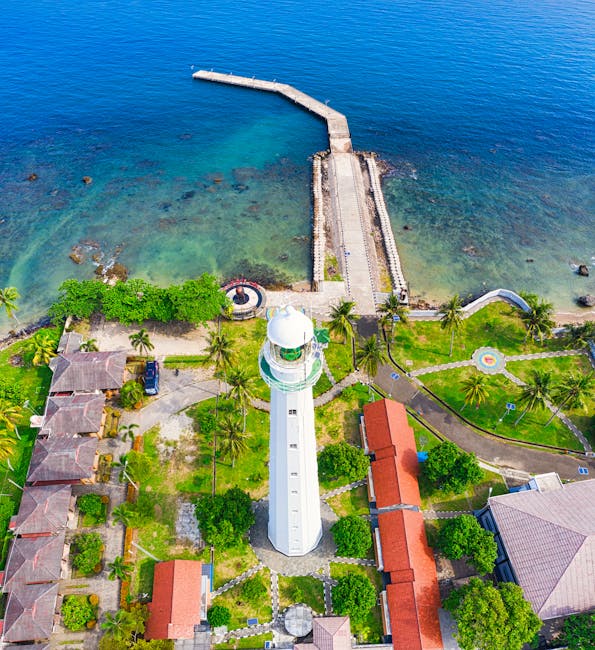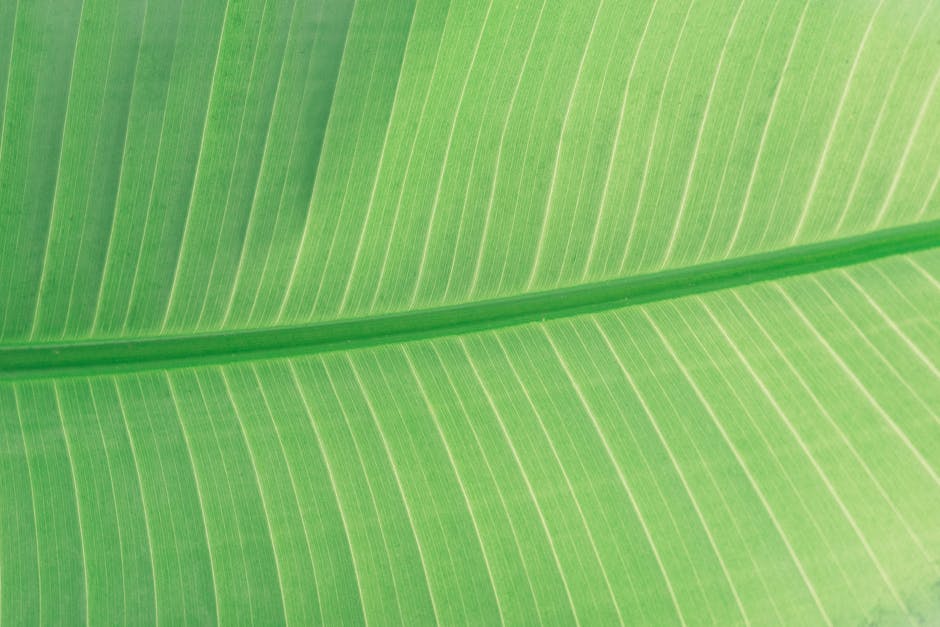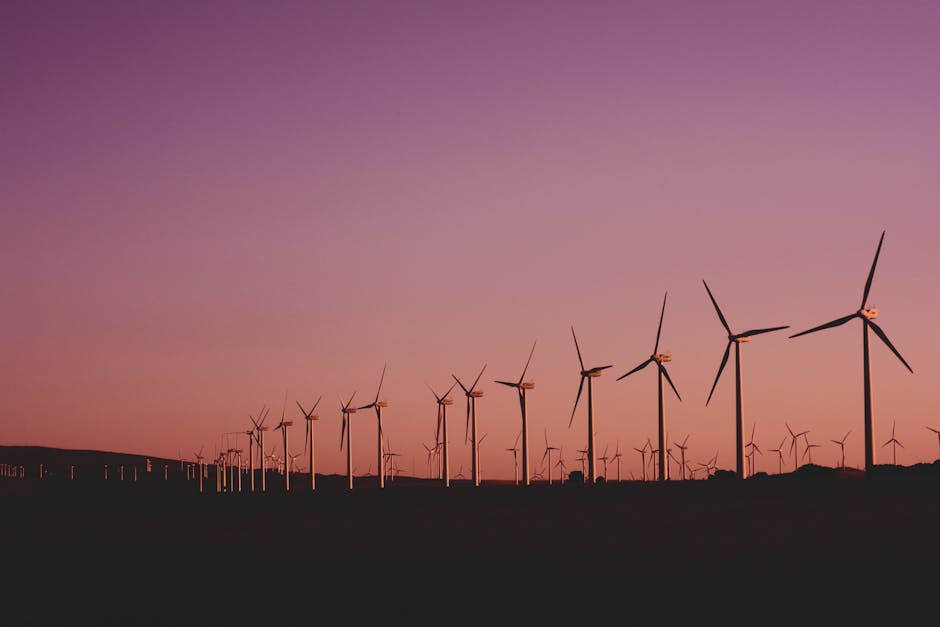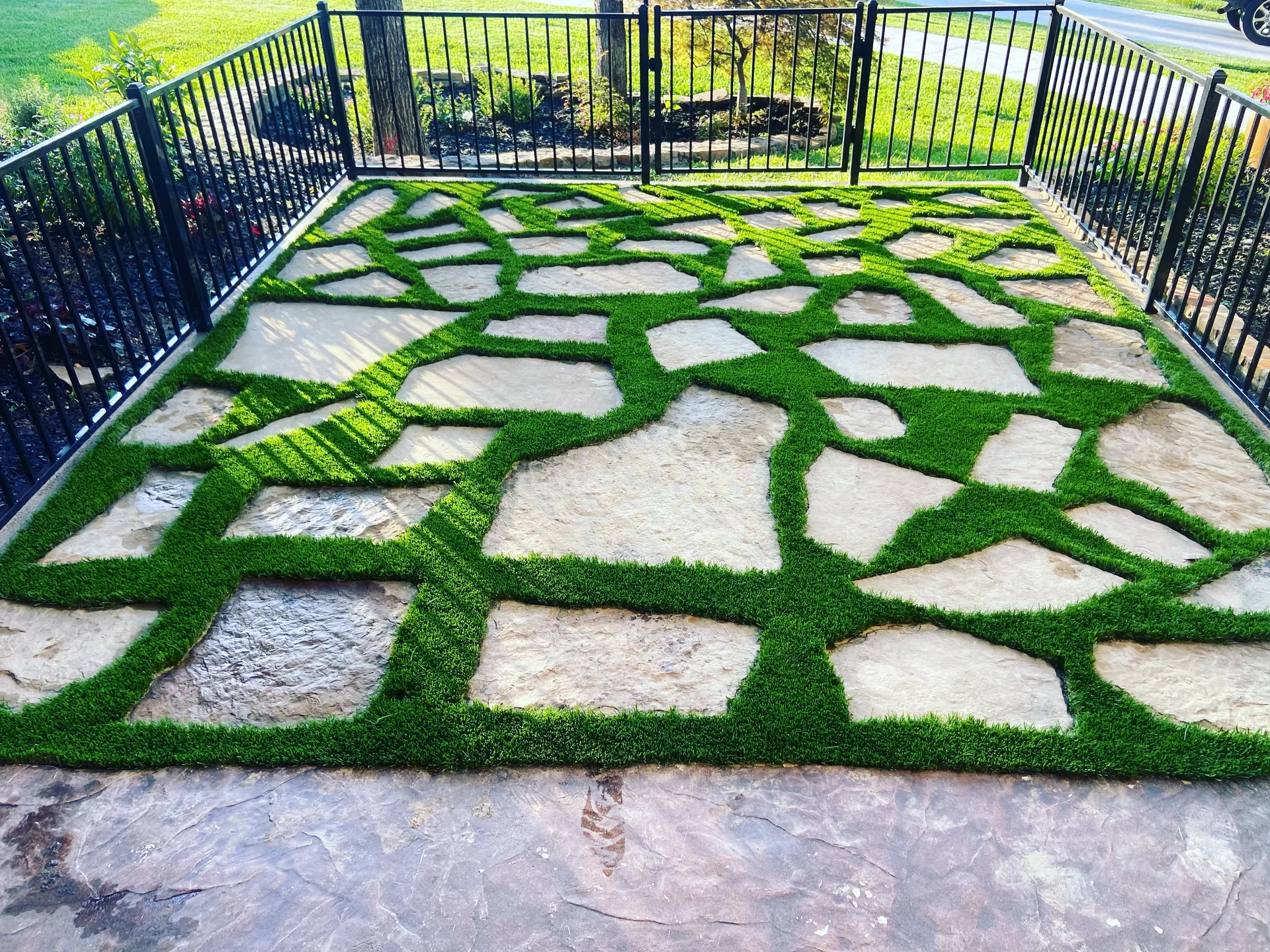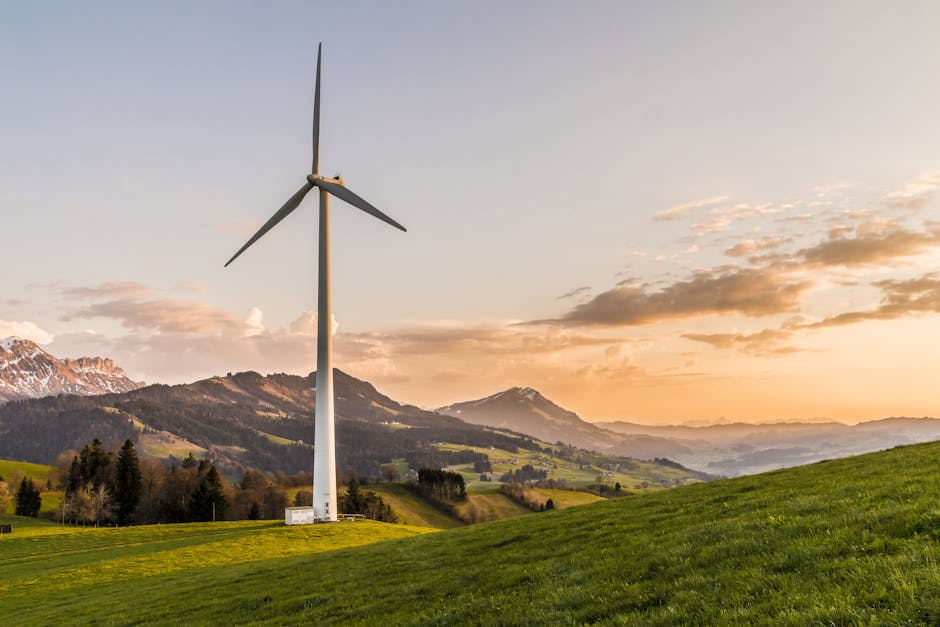
Introduction to Artificial Grass Installations in Commercial Landscapes
Artificial grass installations have become increasingly common in commercial landscapes. These spaces include business complexes, shopping centers, and recreational areas. The rising adoption of artificial turf can be attributed to several factors that cater to both aesthetic and functional needs.
One of the primary motivations for businesses to opt for artificial grass is its low maintenance requirements compared to natural grass. Regular watering, mowing, and fertilizing are necessary for natural lawns, which can be both time-consuming and costly. In contrast, artificial grass requires minimal upkeep, often limited to occasional cleaning and brushing to maintain its appearance.
In addition to lower maintenance demands, artificial grass offers a durable solution for high-traffic areas. Commercial landscapes often experience significant wear and tear, from foot traffic to events. Natural grass may struggle to remain lush and green under such conditions, while artificial turf is designed to withstand extensive use without deteriorating.
Water conservation is another significant advantage of artificial grass. With growing concerns over water scarcity and the environmental impact of water-intensive landscaping, businesses are looking for sustainable options. Artificial turf helps reduce water usage significantly, as it does not require irrigation, thus contributing to more sustainable water management practices in commercial spaces.
Moreover, artificial grass installations can provide a consistent aesthetic appeal throughout the year. Unlike natural grass, which can vary in appearance due to seasonal changes and weather conditions, artificial turf remains visually appealing and green regardless of external factors. This consistency can be particularly beneficial for businesses that aim to maintain an attractive and welcoming environment for customers and employees alike.
While there are numerous benefits associated with artificial grass, it is crucial to consider potential drawbacks. Concerns have been raised about the environmental impact of synthetic materials used in artificial turf and their contribution to plastic waste. Additionally, the initial investment cost for artificial grass can be higher than natural grass, though it may be offset by lower maintenance expenses over time.
In summary, artificial grass installations in commercial landscapes present a viable alternative to natural grass, driven by factors such as low maintenance, durability, water conservation, and year-round aesthetic appeal. However, it is essential to weigh these benefits against potential environmental impacts and initial costs to make an informed decision.
Environmental Impact of Artificial Grass: Water Conservation and Urban Heat Island Effect
One of the primary environmental benefits of artificial grass installations in commercial landscapes is water conservation. According to the Environmental Protection Agency (EPA), outdoor water use accounts for around 30% of total household consumption, with a significant portion going towards landscape irrigation. By replacing natural grass with artificial alternatives, businesses can reduce their water usage significantly. This is particularly critical in arid regions where water scarcity is a pressing issue.
Artificial grass does not require irrigation, leading to potentially substantial water savings. For instance, the Synthetic Turf Council estimates that a typical natural grass sports field requires between 500,000 to 1,000,000 gallons of water annually. By converting an equivalent area to artificial turf, this large volume of water can be conserved, relieving pressure on local water resources.
Another environmental consideration is the urban heat island effect, which refers to the increased temperature observed in urban areas compared to rural surroundings. This phenomenon is exacerbated by human activities and the proliferation of heat-absorbing surfaces like concrete and asphalt. While natural grass can help to mitigate this effect by providing cooling through evapotranspiration, artificial grass can contribute to higher ambient temperatures due to its synthetic materials.
Studies have shown that the surface temperature of artificial grass can be significantly higher than that of natural grass. For example, research from Penn State indicates that artificial turf surfaces can become 35-60 degrees Fahrenheit hotter than natural grass under identical conditions. This increase can contribute to localized warming and may necessitate additional cooling measures, such as increased air conditioning usage, which carries its own environmental cost.
Moreover, the production and disposal of artificial grass involve environmental considerations. The manufacturing process of synthetic turf typically utilizes petroleum-based products and other non-renewable resources, which contribute to greenhouse gas emissions. Additionally, the end-of-life disposal of artificial grass can pose challenges as it is not biodegradable and recycling options are limited.
In summary, while artificial grass installations offer significant water conservation benefits, they also present challenges related to urban heat island effects and lifecycle environmental costs. Decision-makers must weigh these factors when considering artificial grass for commercial landscapes.
Economic Analysis: Installation, Maintenance, and Long-term Costs
When evaluating the economic implications of installing artificial grass in commercial landscapes, it is crucial to consider both the initial installation costs as well as the ongoing maintenance and long-term expenses.
Installation Costs: The initial cost for installing artificial grass is generally higher than natural grass. This includes the price of the synthetic turf itself, site preparation, and installation labor. According to a 2021 report from HomeAdvisor, the average cost to install artificial grass is approximately $12 to $14 per square foot, depending on factors such as the quality of the turf and the complexity of the project.
Maintenance Expenses: One of the primary economic advantages of artificial grass is the reduction in maintenance costs. Unlike natural grass, artificial turf does not require regular watering, mowing, fertilizing, or pesticide applications. This can result in significant savings in water and lawn care services. A study by the Synthetic Turf Council indicates that maintaining natural grass can cost around $1,500 to $2,000 per year per half-acre, a cost that is largely avoided with artificial grass.
Long-term Costs: While the initial investment for artificial grass is higher, the long-term costs are generally lower. The lifespan of high-quality artificial turf is typically around 8 to 15 years. Over this period, the savings on water, fertilizers, pesticides, and maintenance equipment can add up. However, replacement costs must also be considered after the lifespan ends. The following table illustrates a comparison of costs over a 10-year period for a 1,000 square foot area:
| Description | Approximate Costs Over 10 Years |
|---|---|
| Initial Installation (Artificial Grass) | $12,000 – $14,000 |
| Maintenance and Watering (Natural Grass) | $15,000 – $20,000 |
In summary, the economic analysis of artificial grass installations shows an initial high cost but offers substantial long-term savings primarily due to reduced maintenance and water usage. These factors make artificial grass a potentially cost-effective option for commercial landscapes, particularly in areas facing water restrictions or high water costs.
Comparative Environmental Footprint: Artificial vs. Natural Grass
There are several important factors to consider when comparing the environmental footprint of artificial grass to that of natural grass in commercial landscapes. Both types of grass have distinctive characteristics that influence their overall environmental impact.
Carbon Footprint
When assessing the carbon footprint of artificial grass, it’s important to consider the entire lifecycle of the product, from production to disposal. The manufacturing process of synthetic turf involves the use of various petrochemical-based materials, which contribute to greenhouse gas (GHG) emissions. Additionally, the transportation of these materials to installation sites can further increase the carbon footprint.
Conversely, natural grass has the ability to sequester carbon dioxide (CO2) from the atmosphere through photosynthesis. However, the maintenance of natural grass, which includes regular mowing, watering, and the application of fertilizers and pesticides, can offset some of these benefits. The production and use of these maintenance tools and chemicals also contribute to GHG emissions.
Water Usage
Artificial grass installations are renowned for their water conservation benefits, as they do not require regular watering like natural grass. This is a significant advantage in regions experiencing water scarcity or drought conditions. The reduction in water usage not only conserves a precious resource but also decreases the energy consumption associated with water treatment and distribution.
On the other hand, natural grass requires substantial amounts of water, especially in arid climates. Irrigation systems needed for maintaining natural grass lawns can lead to extensive water use, often necessitating the drawing of water from already stressed water supplies.
Soil Health and Erosion
Artificial grass can have a negative impact on soil health. The installation process often involves removing existing soil and replacing it with a layer of crushed stone or sand, which can disrupt natural soil profiles. Additionally, synthetic turf can impede the natural infiltration of rainwater, potentially leading to increased runoff and soil erosion in surrounding areas.
Natural grass, however, plays a critical role in maintaining soil health. It helps to stabilize soil, prevent erosion, and promote water infiltration. The root systems of natural grass can also support a diverse range of microbial life, enhancing soil fertility.
Heat Retention
One of the significant environmental concerns with artificial grass is its tendency to retain heat. Synthetic turf can become significantly hotter than natural grass, contributing to the urban heat island effect. Studies have shown that surface temperatures of artificial turf can soar above those of natural grass, particularly during sunny, hot conditions.
Natural grass, in contrast, helps to cool the environment through the process of transpiration, where water is released from plant surfaces into the atmosphere. This cooling effect can mitigate the urban heat island impact and create more comfortable outdoor environments.
- Carbon Footprint: Higher for artificial grass due to manufacturing and transportation.
- Water Usage: Artificial grass saves water, especially in arid regions, while natural grass requires substantial irrigation.
- Soil Health and Erosion: Artificial grass disrupts soil health; natural grass supports soil stability and fertility.
- Heat Retention: Artificial grass retains more heat, exacerbating the urban heat island effect.
Impact on Biodiversity and Local Ecosystems
Artificial grass installations in commercial landscapes can significantly affect biodiversity and local ecosystems. While they offer certain benefits, such as reducing water usage and maintenance costs, their environmental ramifications are complex and multifaceted.
Disruption of Local Flora and Fauna
Natural grass and soil provide a habitat for various species of insects, microorganisms, and plants. Replacing natural landscapes with artificial grass eliminates these habitats, consequently affecting biodiversity. A study by The UK Centre for Ecology & Hydrology found that artificial lawns can disrupt food chains, particularly impacting pollinators like bees and butterflies. The absence of real grass also affects soil health by reducing organic matter and its associated microorganisms.
Soil Health and Permeability
Artificial grass installations often require a base layer of compacted sand or gravel and a layer of infill materials like crumb rubber. These layers hinder water infiltration, leading to poor soil aeration and potential run-off issues. According to research published in the Journal of Environmental Management, areas covered with artificial grass show significantly decreased soil biota and diminished soil health compared to natural grass areas.
Introduction of Non-Native Materials
The installation of artificial grass involves the use of synthetic materials that are not native to the local ecosystem. These materials can introduce microplastics to the environment, which could wash away into local waterways, contributing to pollution. A study by the National Oceanic and Atmospheric Administration (NOAA) has indicated that microplastics can have long-lasting detrimental effects on marine and terrestrial ecosystems.
Heat Generation and Microclimate Alterations
Artificial grass can reach temperatures substantially higher than natural grass due to its synthetic composition. This can affect local microclimates, influencing the survival and behavior of local wildlife. Research by the Environmental Protection Agency (EPA) indicates that artificial turf can cause surface temperatures to be 35-60°F hotter than surrounding air temperatures, potentially creating inhospitable conditions for species accustomed to cooler, shaded environments.
In conclusion, while artificial grass offers certain practical benefits, its installation in commercial landscapes poses significant challenges to local biodiversity and ecosystem health. A balanced approach, considering both environmental and economic factors, is crucial for sustainable landscaping decisions.
Regulatory Landscape and Industry Standards
6. Regulatory Landscape and Industry Standards
The installation and use of artificial grass in commercial landscapes are governed by a complex array of regulations and industry standards aimed at ensuring environmental safety, material quality, and public health. These regulations and standards vary widely by region, making it essential for stakeholders to be aware of local requirements and best practices.
Environmental Regulations
Many countries and regions have established environmental regulations that address the potential impacts of artificial grass. In the United States, for instance, the Environmental Protection Agency (EPA) provides guidelines pertaining to run-off water management, material degradation, and the impact on local ecosystems. Similarly, the European Union has stringent regulations under the REACH (Registration, Evaluation, Authorisation, and Restriction of Chemicals) framework, which mandates the evaluation of chemicals used in artificial grass products.
Material Safety Standards
Material safety is another critical aspect governed by industry standards. Organizations such as ASTM International and the International Organization for Standardization (ISO) have developed various standards that specify requirements for synthetic turf products. For example, ASTM D5848 outlines the standard test method for mass per unit area of pile yarn in artificial grass, which helps ensure durability and performance quality. ISO 9001 and ISO 14001 certifications are often sought by manufacturers to demonstrate compliance with quality management and environmental management systems, respectively.
Health and Safety Regulations
Health and safety are paramount in the regulatory landscape for artificial grass installations. Concerns about toxic chemicals, such as heavy metals and volatile organic compounds (VOCs), have led to stricter controls. In the United States, California’s Proposition 65 requires businesses to provide warnings about significant exposures to chemicals that cause cancer, birth defects, or other reproductive harm, impacting artificial grass products that contain such substances.
Certification and Compliance
Certification from recognized bodies provides an added layer of assurance regarding the quality and safety of artificial grass products. The Synthetic Turf Council (STC), for example, offers certification programs that assess various aspects of turf performance, including environmental impact, safety, and longevity. Likewise, products that meet the criteria set by independent testing organizations often display certification marks, which offer stakeholders confidence in their suitability for commercial applications.
Local and Regional Guidelines
In addition to national and international standards, local building codes and municipal guidelines often contain specific requirements for artificial grass installations. These regulations might address aspects such as drainage, fire resistance, and permissible activities on artificial surfaces. Adherence to these local regulations is crucial to ensure compliance and avoid potential fines or legal issues.
Case Studies and Best Practices
While specific case studies are not included in this chapter, it is noteworthy that various municipalities and commercial entities routinely publish best practices and compliance case studies. These documents often provide valuable insights and practical guidance for ensuring that artificial grass installations meet all relevant regulatory and industry standards.
In conclusion, the regulatory landscape and industry standards surrounding artificial grass installations in commercial landscapes are comprehensive and multifaceted. Familiarity with these regulations and adherence to industry best practices are essential for ensuring that artificial grass installations are both environmentally responsible and compliant with health and safety requirements.
Future Trends and Innovations in Artificial Grass Technology
The future of artificial grass technology is being shaped by several emerging trends and innovations aimed at enhancing both environmental and economic benefits. These advancements can potentially address current limitations and drive wider adoption in commercial landscapes.
Recyclable and Sustainable Materials
A major trend in artificial grass technology is the development and use of recyclable and more sustainable materials. Several manufacturers are investing in eco-friendly options, moving away from traditional, non-recyclable synthetic fibers to more sustainable alternatives. These new materials aim to reduce environmental impact at the end of the product’s lifecycle by enabling easier recyclability and reducing landfill waste.
Improved Water Permeability
Innovations in artificial grass backing systems are improving water permeability, reducing the risk of water pooling and enhancing drainage capabilities. Advanced designs involve integrated drainage layers that can efficiently manage heavy rainfall, thereby minimizing runoff and contributing to better water management practices in urban landscapes.
Enhanced UV Protection
To combat degradation from prolonged sun exposure, new artificial grass products are incorporating enhanced UV-resistant coatings. These developments not only extend the lifespan of the grass, making it more cost-effective over time, but also maintain its aesthetic appeal, ensuring that it remains vibrant and functional even under intense sunlight.
Technological Integration
Integrating technology into artificial grass is an emerging trend. Innovations such as built-in sensors can monitor soil moisture levels and temperature, providing data to optimize water usage and maintenance schedules. This can further improve the sustainability profile of artificial grass installations by enabling more efficient resource management.
Bio-based and Hybrid Solutions
There is a growing interest in bio-based and hybrid solutions that combine the benefits of artificial and natural grass. Bio-based artificial grass products incorporate organic materials, such as infill from coconut husks or cork, which can provide a more sustainable alternative to traditional synthetic options while maintaining the durability and low maintenance advantages of artificial grass.
Health and Safety Improvements
Recent innovations also focus on improving health and safety features. For instance, antimicrobial treatments are being developed to prevent the growth of harmful bacteria and fungi on artificial grass surfaces, reducing health risks for users. Additionally, advancements in infill materials aim to minimize chemical exposure and mitigate issues such as high surface temperatures during summer months.
Future Outlook
The continued evolution of artificial grass technology promises to address many of the existing environmental and economic challenges. As innovation progresses, artificial grass may become an even more viable option for commercial landscapes, offering enhanced sustainability, cost-effectiveness, and user safety. Keeping pace with these trends will be essential for stakeholders in the industry to leverage the full potential of artificial grass installations.
